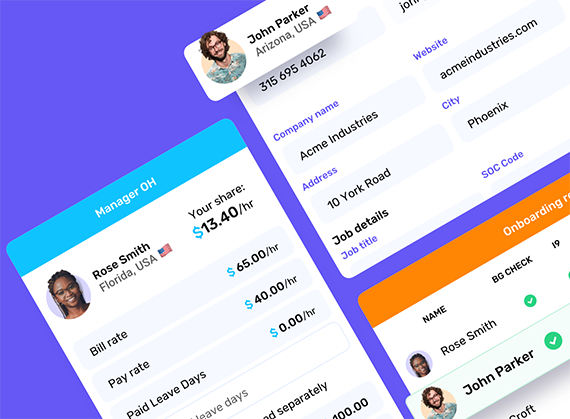When it comes to contract staffing, the mechanics of getting a job order and finding a candidate are the same as making direct placements. What is different about contract staffing is that you must have a back-office to handle the legal, financial, and administrative issues. You have two options for a back-office: Outsourcing it or doing it in-house. Let’s examine the differences between the two methods.
Outsourcing: The Express Method
You can outsource the back-office tasks to a contract staffing back-office, which will become the legal W-2 employer of record for your contractors. A quality back-office should already be set up to employ all of your contractors, so you should be able to get started rather quickly.
If you select FoxHire, there is no enrollment process for recruiters. As a result, you can literally go from a 100% direct hire recruiter to one that can also place contractors in a matter of hours, not months.
If you are interested in adding contract staffing to your business model and outsourcing your back-office, we recommend that you check out our Quick Start to Contract Staffing Video, which will show you just how quick and easy it is to get started.
In-House Back-Office: The Slow Boat
If you plan to run your own back-office, you should expect the ramp up process to take at least one to three months due to all the tasks you must complete to get set up to become the employer of record for your contractors, including:
- Getting a line of credit to fund your payrolls.
- Getting sufficient liability insurance as you will be required by most clients to show a valid certificate of insurance.
- Deciding how you are going to process payroll (in-house or outsource) and getting that set up.
- Registering to withhold state, city, and local income taxes in all the required jurisdictions and getting set up to do the required withholdings, deposits, and filings.
- Registering for unemployment, Workers’ Compensation, and disability insurance, if applicable, in each of the states in which you will have contractors.
- Setting up a method to provide contractors with paid leave/sick time if required in the states where you will have contractors.
- If you plan to offer insurance (which you may be required to do soon under Obamacare), you will need to find an insurance company that can provide coverage in each state where you will have contractors.
That is just a small sampling of all the tasks that must be completed before you can place contractors. While this was tailored to recruiters who are already doing contracting and want to expand outside their home state, most of the steps also apply to direct-hire recruiters just adding contract staffing to their business models.
You can see even just from our small sampling above how time-consuming and complicated running your own back-office can be. So it’s up to you: do you want to take the express method or the slow boat to contract staffing?





